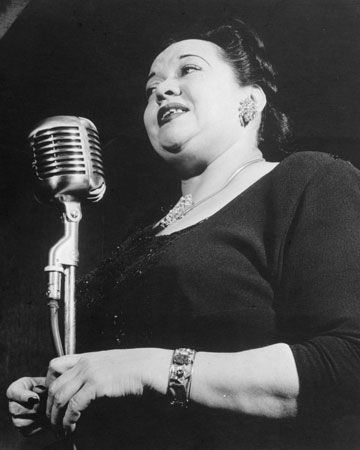Mildred Bailey
Our editors will review what you’ve submitted and determine whether to revise the article.
- Original name:
- Mildred Rinker
- Born:
- Feb. 27, 1907, Tekoa, Wash., U.S.
- Died:
- Dec. 12, 1951, Poughkeepsie, N.Y.
Mildred Bailey (born Feb. 27, 1907, Tekoa, Wash., U.S.—died Dec. 12, 1951, Poughkeepsie, N.Y.) was an American singer known for her light soprano voice, clear articulation, and jazz phrasing. As a singer, Bailey was especially influenced by Ethel Waters and Bessie Smith, and she was one of the first nonblack performers to become a skilled jazz singer.
Bailey began life on the Coeur d’Alene reservation, the child of a white father and an Indian mother. She first learned music from her mother, a pianist. In about 1913 her family moved to Spokane, and in 1916 her mother died. By age 17 Bailey was on her own. Biographies conflict about the next few event-filled years, but the outline is straightforward. She worked as a pianist in movie theatres, as a music clerk, and as a singer in speakeasies. Her brief marriage to a man named Ted Bailey gave her the name she kept; with her second husband, Benny Stafford, she moved to Los Angeles while still in her teens and began singing at various nightclubs and speakeasies. Inspired by her success, her brother Al Rinker and his friend Bing Crosby moved to Los Angeles, and they were hired by Paul Whiteman in 1926. In 1929 they introduced Whiteman to Bailey, and she joined the orchestra as the first featured female vocalist in a big band. Bailey’s career took off during her four years with Whiteman. Her renditions of “Georgia on My Mind” and particularly “Rockin’ Chair” were popular favourites. (She even became known as the “Rockin’ Chair Lady.”)
In 1933 she married Whiteman’s xylophonist, Red Norvo. He started his own band that year, while she launched her solo career. She recorded with many of the top jazz musicians of the era, was heard by national audiences on a number of radio programs, and appeared at many of the popular ballrooms and nightclubs around the country. In 1936, when Norvo’s group was struggling, he brought in Bailey as the featured soloist. Until the band folded in 1939, the couple was known as “Mr. and Mrs. Swing.” Songs that became closely identified with Bailey include “Someday Sweetheart,” “More than You Know,” and “The Lamp Is Low.”

After the demise of the Norvo band, Bailey resumed her solo career. She performed at top New York nightclubs, had her own CBS radio series in 1944, and continued to make recordings of high quality. Health problems curtailed her activities after 1945, although she did continue to perform occasionally until her death.













